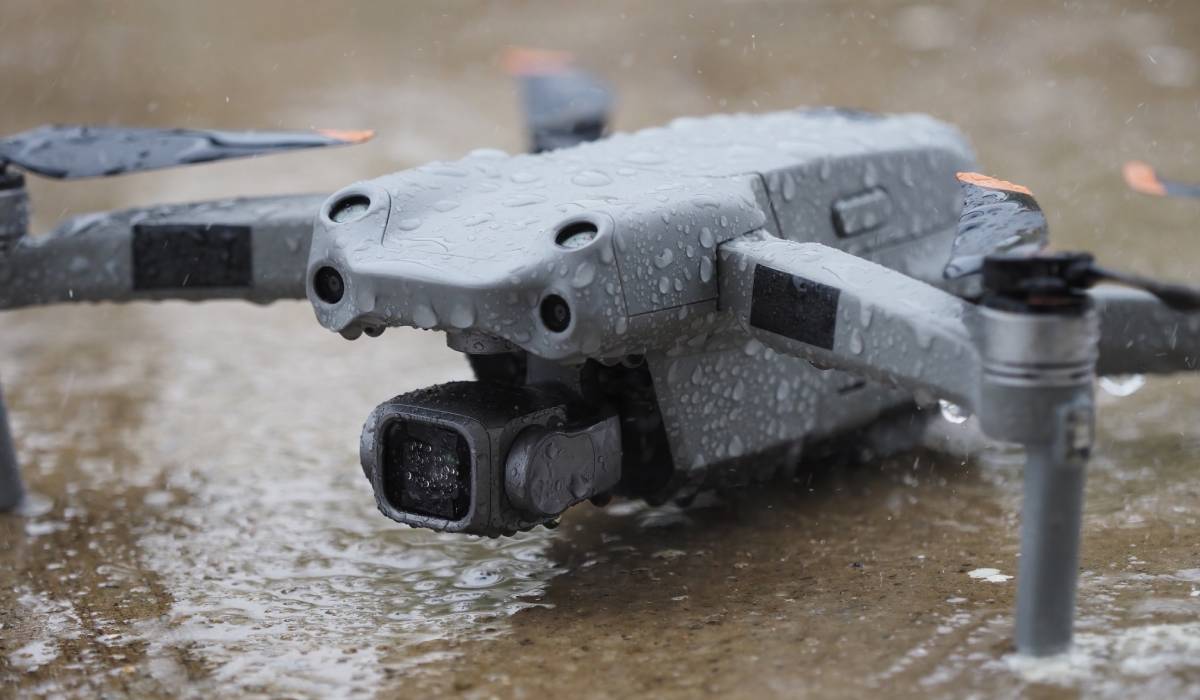How To Fly Your Drone in Inclement Weather
- Casey Cartwright
- D.O.C Supplements - Trending News
- Technology
- July 10, 2024

Flying a drone can be an exhilarating experience, offering breathtaking views and the thrill of piloting a cutting-edge piece of technology. However, navigating the skies becomes significantly more challenging when the weather takes a turn for the worse.
Inclement weather conditions, such as rain, wind, and snow, can pose serious risks to both your drone and the quality of your flight. In this guide, we’ll explore essential tips and best practices for flying your drone in inclement weather to ensure your drone remains airborne, no matter what Mother Nature throws your way.
When the weather deteriorates, you first need to be vigilant about visibility. Poor visibility can lead to disorientation and may result in losing line-of-sight with your drone; fog, heavy rain, and snowfall can obscure your view, making it difficult and dangerous to navigate. To avoid mishaps, always ensure that you have a clear view of your drone throughout the flight. Use your drone’s camera feed, but don’t rely solely on it—remember, you may not be the only aerial vehicle in the sky.
Wind is another formidable opponent when it comes to flying drones in bad weather, and believe it or not, it can have a great impact on your battery and overall flight time. Strong winds can easily overpower your drone’s motors, making it difficult to control and draining your battery while you fight against the wind. Check the wind speeds and directions before taking off, and remain cautious of sudden gusts. If the winds are too strong, ground your drone and wait for conditions to improve.
However, your battery isn’t the only component you need to worry about. One of the greatest threats to drone flight in cold weather is ice. This is because ice can form on the propellers and the body of the drone, adding weight and disrupting balance and aerodynamics. If you notice any signs of ice forming, land as soon as possible. Additionally, avoid taking off and landing directly on snow; equip yourself with a landing pad if you have the opportunity.
Just like ice, moisture is another major threat to your drone’s electronic components for similar reasons. Rain or snow can seep into the drone, causing malfunctions or complete system failures. If you must fly your drone in wet conditions, consider using waterproof components or protective covers to shield it from moisture. However, the best practice is to avoid flying in heavy rain or snow altogether—even a light mist can cause rust and corrosion on internal parts.
After flying in inclement weather, ensure your drone is completely dry before storing it. The last thing you want is to come back to a rusted drone. Take the time to wipe down the drone with a soft towel and allow it to air dry thoroughly. Check for any moisture in the battery compartment and around sensitive electronics.
Flying your drone in inclement weather is no easy feat, but with the right precautions and knowledge, it can be a manageable and rewarding experience. Remember, staying informed and prepared for adverse conditions is key to ensuring both your enjoyment and the longevity of your drone.








